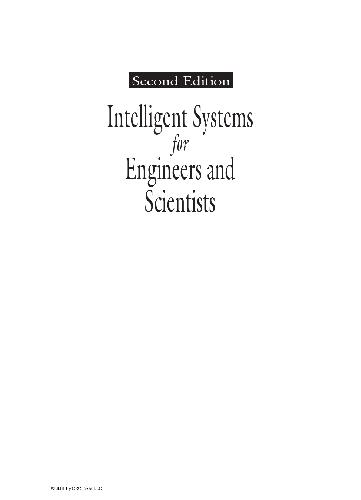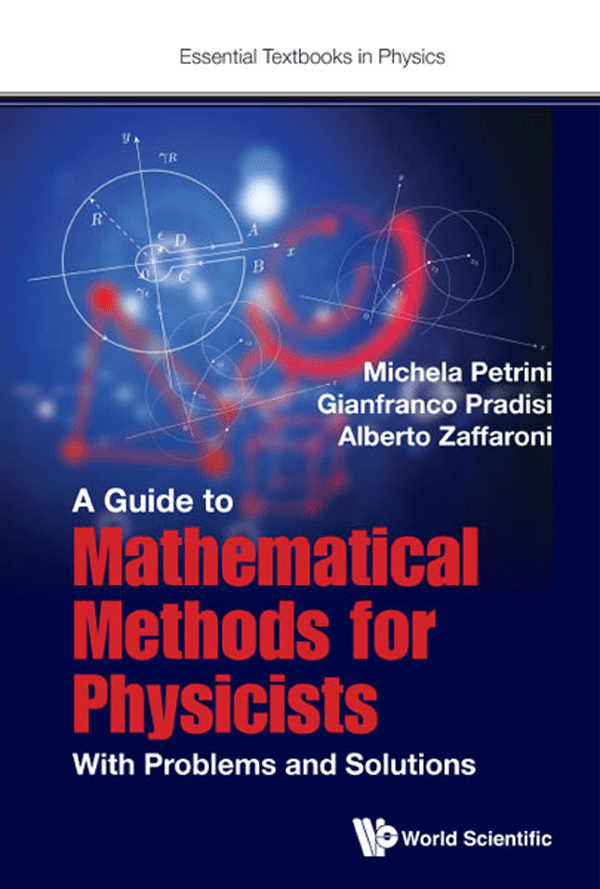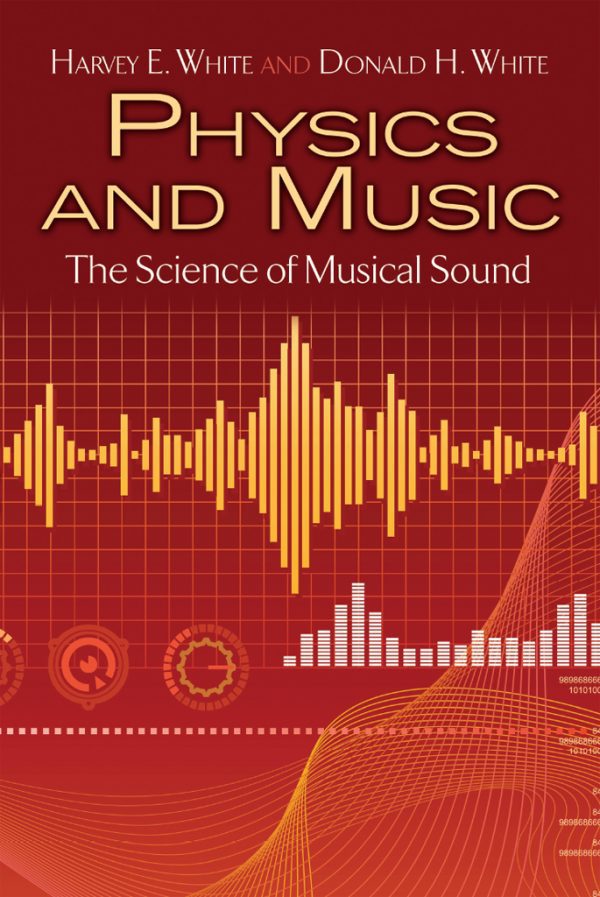0-8493-0456-3
Table of contents :
Intelligent Systems for Engineers and Scientists……Page 1
Preface……Page 4
The author……Page 6
Contents……Page 8
1.1 Intelligent systems……Page 16
Table of Contents……Page 0
1.2 Knowledge-based systems……Page 17
1.3 The knowledge base……Page 19
1.4 Deduction,abduction,and induction……Page 22
1.5 The inference engine……Page 23
1.6 Declarative and procedural programming……Page 24
1.7 Expert systems……Page 26
1.9 Search……Page 27
1.10 Computational intelligence……Page 30
1.11 Integration with other software……Page 31
Further reading……Page 32
2.1 Rules and facts……Page 33
2.2 A rule-based system for boiler control……Page 34
2.3 Rule examination and rule firing……Page 36
2.4 Maintaining consistency……Page 37
2.5 The closed-world assumption……Page 39
2.6 Use of variables within rules……Page 40
2.7 Forward-chaining (a data-driven strategy)……Page 42
2.7.1 Single and multiple instantiation of variables……Page 44
2.7.2 Rete algorithm……Page 46
2.8.2 Priority values……Page 48
2.8.3 Metarules……Page 49
2.9.1 The backward-chaining mechanism……Page 50
2.9.3 Variations of backward-chaining……Page 53
2.10 A hybrid strategy……Page 56
2.11 Explanation facilities……Page 59
2.12 Summary……Page 60
Further reading……Page 61
3.1 Sources of uncertainty……Page 62
3.2.1 Representing uncertainty by probability……Page 63
3.2.2 Direct application of Bayes’ theorem……Page 64
3.2.3 Likelihood ratios……Page 66
3.2.4 Using the likelihood ratios……Page 67
3.2.5 Dealing with uncertain evidence……Page 69
3.2.6 Combining evidence……Page 70
3.2.7 Combining Bayesian rules with production rules……Page 73
3.2.8 A worked example of Bayesian updating……Page 74
3.2.9 Discussion of the worked example……Page 77
3.2.10 Advantages and disadvantages of Bayesian updating……Page 78
3.3.1 Introduction……Page 79
3.3.2 Making uncertain hypotheses……Page 80
3.3.3 Logical combinations of evidence……Page 82
3.3.4 A worked example of certainty theory……Page 83
3.3.5 Discussion of the worked example……Page 85
3.4 Possibility theory:fuzzy sets and fuzzy logic……Page 86
3.4.1 Crisp sets and fuzzy sets……Page 87
3.4.2 Fuzzy rules……Page 90
3.4.3 Defuzzification……Page 92
Stage 1:scaling the membership functions……Page 93
Stage 2:finding the centroid……Page 94
Defuzzifying at the extremes……Page 95
A defuzzification anomaly……Page 96
3.5.1 Dempster–Shafer theory of evidence……Page 98
3.5.2 Inferno……Page 99
3.6 Summary……Page 100
References……Page 101
Further reading……Page 102
4.1 Objects and frames……Page 104
4.2 An illustrative example……Page 105
4.3 Introducing OOP……Page 107
4.4.2 Instances……Page 108
4.4.3 Attributes (or data members)……Page 109
4.4.5 Creation and deletion of instances……Page 110
4.5.1 Single inheritance……Page 113
4.5.2 Multiple and repeated inheritance……Page 115
4.5.3 Specialization of methods……Page 118
4.5.4 Browsers……Page 119
4.7 Unified Modeling Language (UML)……Page 120
4.8 Dynamic (or late)binding……Page 123
4.9 Message passing and function calls……Page 126
4.9.1 Pseudovariables……Page 127
4.9.2 Metaclasses……Page 128
4.10 Type checking……Page 129
4.11 Further aspects of OOP……Page 131
4.11.3 Overloading……Page 132
4.11.4 Active values and daemons……Page 134
4.12 Frame-based systems……Page 135
4.13 Summary……Page 137
Further reading……Page 139
5.1 Characteristics of an intelligent agent……Page 141
5.2 Agents and objects……Page 143
5.3.2 Emergent behavior architectures……Page 144
5.3.3 Knowledge-level architectures……Page 145
5.4 Multiagent systems……Page 146
5.4.1 Benefits of a multiagent system……Page 147
5.4.2 Building a multiagent system……Page 149
Contract nets……Page 150
CPS framework……Page 151
Shifting Matrix Management (SMM)……Page 152
5.4.3 Communication between agents……Page 154
5.5 Summary……Page 155
References……Page 156
Further reading……Page 157
6.1 Introduction……Page 158
6.2.1 Overview……Page 160
6.2.2 Learning viewed as a search problem……Page 162
Replacing constants with variables……Page 164
Using conjunctions and disjunctions……Page 165
Moving up or down a hierarchy……Page 166
Chunking……Page 167
Abstraction links and index links……Page 168
6.3.2 Retrieving cases……Page 170
Parameterization……Page 171
Reinstantiation……Page 172
6.3.4 Dealing with mistaken conclusions……Page 173
References……Page 174
Further reading……Page 175
7.2 The search space……Page 176
7.3 Searching the search space……Page 178
7.4.1 Hill-climbing……Page 179
7.4.4 Conjugate gradient descent or ascent……Page 180
7.5 Simulated annealing……Page 181
7.6 Genetic algorithms……Page 184
Chromosomes……Page 185
Algorithm outline……Page 186
Crossover……Page 187
Validity check……Page 188
Fitness-proportionate selection……Page 189
Linear fitness scaling……Page 191
Rank selection……Page 193
Truncation selection……Page 194
Elitism……Page 195
7.6.3 Gray code……Page 196
7.6.4 Variable length chromosomes……Page 197
Inversion……Page 199
7.6.6 Selecting GA parameters……Page 200
7.6.9 Finding multiple optima……Page 201
7.7 Summary……Page 202
References……Page 203
Further reading……Page 205
8.1 Introduction……Page 206
8.2.1 Nonlinear estimation……Page 207
8.2.3 Clustering……Page 208
8.3 Nodes and interconnections……Page 209
8.4.1 Network topology……Page 211
8.4.2 Perceptrons as classifiers……Page 213
8.4.3 Training a perceptron……Page 216
8.4.5 Some practical considerations……Page 219
8.5 The Hopfield network……Page 222
8.6 MAXNET……Page 223
8.7 The Hamming network……Page 224
8.8 Adaptive Resonance Theory (ART)networks……Page 225
8.9 Kohonen self-organizing networks……Page 227
8.10 Radial basis function networks……Page 228
8.11 Summary……Page 231
References……Page 232
Further reading……Page 233
Parameter setting……Page 234
9.2 Blackboard systems……Page 235
9.3 Genetic-fuzzy systems……Page 237
9.4 Neuro-fuzzy systems……Page 238
9.6 Clarifying and verifying neural networks……Page 240
9.7 Learning classifier systems……Page 241
References……Page 242
Further reading……Page 243
10.1 A range of intelligent systems tools……Page 244
10.4 Artificial intelligence languages……Page 245
10.4.1 Lists……Page 246
10.4.2 Other data types……Page 247
10.4.3 Programming environments……Page 248
10.5.1 Background……Page 249
10.5.2 Lisp functions……Page 250
10.5.3 A worked example……Page 254
10.6.2 A worked example……Page 261
10.6.3 Backtracking in Prolog……Page 268
10.7 Comparison of AI languages……Page 272
References……Page 273
Further reading……Page 274
PROSPECTOR……Page 275
11.2 Deduction and abduction for diagnosis……Page 276
Explicit modeling of uncertainty……Page 278
Hypothesize-and-test……Page 279
11.3.1 Shallow knowledge……Page 280
11.3.2 Deep knowledge……Page 281
11.3.3 Combining shallow and deep knowledge……Page 282
11.4.1 The limitations of rules……Page 283
11.4.2 Modeling function,structure,and state……Page 284
Function……Page 285
Structure……Page 287
State……Page 288
11.4.3 Using the model……Page 292
11.4.4 Monitoring……Page 293
The shotgun approach……Page 295
11.4.6 Fault simulation……Page 296
11.4.7 Fault repair……Page 297
11.4.9 Summary of model-based reasoning……Page 298
11.5 Case study:a blackboard system for interpreting ultrasonic images……Page 299
11.5.1 Ultrasonic imaging……Page 300
11.5.2 Knowledge sources in ARBS……Page 302
11.5.3 Rules in ARBS……Page 304
11.5.4 Inference engines in ARBS……Page 308
Gathering the evidence……Page 311
11.5.6 The use of neural networks……Page 313
Combining the two applications of neural networks……Page 315
11.5.7 Rules for verifying neural networks……Page 316
11.6 Summary……Page 317
References……Page 318
Further reading……Page 321
12.1 The design process……Page 322
12.2 Design as a search problem……Page 325
12.3 Computer aided design……Page 327
12.4.2 Alternative views of a network……Page 328
12.4.3 Implementation……Page 329
Information stream……Page 331
12.5 Conceptual design……Page 332
12.6 Constraint propagation and truth maintenance……Page 336
12.7.1 Conceptual design……Page 339
12.7.2 Optimization and evaluation……Page 343
12.8.1 Overview……Page 347
12.8.2 Merit indices……Page 348
12.8.4 Two-stage selection……Page 350
12.8.5 Constraint relaxation……Page 351
12.8.6 A naive approach to scoring……Page 355
12.8.7 A better approach to scoring……Page 357
12.8.8 Case study:the design of a kettle……Page 359
12.8.9 Reducing the search space by classification……Page 360
Secondary damage……Page 363
12.10 Summary……Page 365
References……Page 366
Further reading……Page 368
13.1 Introduction……Page 369
13.2 Classical planning systems……Page 370
13.3.1 General description……Page 372
13.3.2 An example problem……Page 373
13.3.3 A simple planning system in Prolog……Page 377
13.4.1 Maintaining a world model……Page 381
13.4.2 Deductive rules……Page 382
13.5.1 Description……Page 383
13.5.2 Benefits of hierarchical planning……Page 385
13.5.3 Hierarchical planning with ABSTRIPS……Page 387
13.6.1 Partial ordering of plans……Page 392
13.7.1 The problem……Page 394
13.7.2 Some approaches to scheduling……Page 396
13.8.1 Constraints and preferences……Page 397
Capacity constraints……Page 398
13.8.3 Identifying the critical sets of operations……Page 400
13.8.4 Sequencing in the disjunctive case……Page 401
13.8.5 Sequencing in the nondisjunctive case……Page 402
13.8.6 Updating earliest start times and latest finish times……Page 403
13.8.7 Applying preferences……Page 407
13.8.8 Using constraints and preferences……Page 409
13.9 Replanning and reactive planning……Page 410
13.10 Summary……Page 411
Constraints……Page 412
References……Page 413
Further reading……Page 414
14.1 Introduction……Page 416
14.2.1 Open-loop control……Page 417
14.2.2 Feedforward control……Page 418
14.2.4 First-and second-order models……Page 419
14.2.5 Algorithmic control:the PID controller……Page 420
14.2.6 Bang-bang control……Page 422
14.3 Requirements of high-level (supervisory)control……Page 424
14.4 Blackboard maintenance……Page 425
14.5.1 Prioritization of processes and knowledge sources……Page 427
14.5.2 Approximation……Page 428
Approximate search……Page 429
Knowledge approximations……Page 430
14.5.3 Single and multiple instantiation……Page 431
14.6.1 Crisp and fuzzy control……Page 433
14.6.2 Firing fuzzy control rules……Page 434
14.6.3 Defuzzification……Page 435
14.6.4 Some practical examples of fuzzy controllers……Page 437
14.7.1 The conventional BOXES algorithm……Page 438
14.7.2 Fuzzy BOXES……Page 444
14.8.1 Direct association of state variables with action variables……Page 446
14.8.2 Estimation of critical state variables……Page 448
14.9.2 Collecting the data……Page 451
14.9.3 Using the data……Page 453
14.10 Summary……Page 454
References……Page 455
Further reading……Page 456
Speed……Page 458
15.2 Implementation……Page 459
15.3 Trends……Page 460
References……Page 461







Reviews
There are no reviews yet.